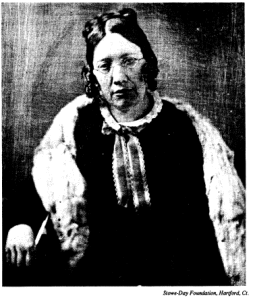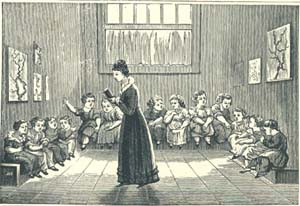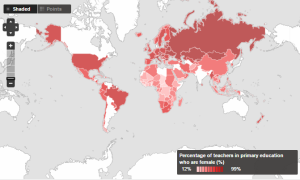Thinking back on your elementary, middle and high school days, you may find that the beloved teachers you learned from over the years were overwhelmingly female. Whether you realized it or not, women make up the majority of primary school teachers, a phenomenon that is only growing with time.
According to data from the U.S. Department of Education, over three-quarters of teachers in primary schools are women. Women particularly dominate elementary and middle schools, and according to a 2014 study from the National Education Association (NEA), there are only 785,151 male teachers across the nation, compared to 2.4 million females.
It didn’t always used to be this way, though. Prior to 1850, teaching was a career held in the majority by men. Boys received an education, while girls were taught how to perform household duties; this left a nearly impossible gap for women to jump if they wanted a career in education.
According to Nancy Hoffman, author of “Woman’s ‘True’ Profession”, America’s massive social changes in the 19th century turned the education system upside down and shaped the feminization of teaching.
The Feminization of Teaching
Industrialization changed America’s economy by leading men in new directions that involved business and more money – trading in the stock market, planning railroads and managing factories. According to Hoffman, the sudden change in economic opportunity left thousands of vacant teaching positions available.
A rise in immigration simply meant there were more children in the cities, which also furthered the demand for teachers.

Catharine Beecher, via National Women’s History Museum.
Educators of the 19th century took this opportunity to declare that women were the “natural” teachers, and that they should take the place of men in grade schools. Catharine Beecher, a passionate spokesperson for women in education, said women were more suited to be teachers than men. She argued that they were more qualified to work with human development, and that they tended to be more benevolent and willing to make sacrifice.
Not only was she concerned with child development, but Beecher had other motives, too. Promoting women as teachers meant that females could hold a “high and honorable profession”. Women of the 1800s were economically vulnerable due to limited choices of work, and teaching meant that they could be independent. In addition, Beecher said the lack of serious work made women’s minds idle, and that teaching helped fight the “consequent diseases of the mind and body that afflict females.”
According to Hoffman, Beecher also argued that teaching was an “extension of mothering”, and could be a respectable alternative to marriage for single educated women.
As more and more young girls took seats in lecture halls to be educated as teachers, less and less men were thought appropriate for the job. According to Hoffman, the late 19th century ideology was, “If the common schools were to form character… the male teacher was inadequate.”
According to WCU history professor and education scholar, Gael Graham, the growing feminization of teaching throughout the 19th century can also be attributed to a new view of children.
“New views of children as sweet little innocent creatures – not imps of Satan, as in Puritan culture – meshed well with the idea that nurturing women would be best suited to teach children, as well as the fact that women could be paid less,” she said.
Women teachers themselves were being educated differently. They were no longer being taught to teach only in girls’ seminaries, but they were finally being taught to instruct in a public school system funded by the state.
By 1860, young female teachers had claim to a fairly decent income and freedom. According to Hoffman, one huge bonus was that independent women teachers could finally marry for affection instead of marrying purely for status.
Controversy and Rebellion
While women had a place in the work force at last, struggle ensued. Into the late 1800s, teachers were stretched thin, so many of them had to instruct over 60 children at a time in a one-room schoolhouse.

A young teacher instructs her students, via American Antiquarian
In a special series on teacher history, the Public Broadcasting Service (PBS) says the difficulty of the job was not unappealing, despite the vast responsibilities. Young women still flocked to the teaching profession, clinging to the independence and purpose it gave them.
By the 20th century, nearly 75 percent of America’s teachers were female, but according to PBS, males dominated in administrative positions. The 1890s through the 1910s was a period of teacher rebellion; women teachers were closely watched, and their work in the classroom was strictly monitored. Moreover, pay was meager and luxuries like benefits and job security were nearly nonexistent.
According to PBS, teachers began to rebel and unions started to emerge. It took a while, but by 1930, female teachers were largely successful. Their annual pay grew and some women began to rise to principal and superintendent rankings.
With the Civil Rights Movement underway in the ‘50s and ‘60s, controversy stirred in schools once more. There was constant disagreement among educators on the issue of civil rights, and unions became prevalent again. Iconic cases rose in this time period, like Brown v. Board of Education, concerning the segregation of public schools and the “equal protection clause” of the Fourteenth Amendment.
The storm didn’t end there; as the ‘80s emerged, teachers were catching heat over increasingly poor student performance. The nation began blaming teachers, saying they were under-qualified. According to PBS, in 1986 the Carnegie Corporation of New York released a report titled “A Nation Prepared: Teachers for the 21st Century,” that aimed to restructure teaching as it had been, giving teachers more say in how they worked with students in their classrooms. In addition, The National Board for Professional Teaching Standards was founded in ’87.

Female teachers continue to dominate primary school classrooms, photo via WCU School of Teaching and Learning
Present Day
It is no surprise that women have many more options for career paths today, and teaching is not getting the attention it used to. According to the NEA, an estimated 40 to 50 percent of teachers leave the job within their first five years.
For those who do stay in the profession, conditions have improved slightly. According to Teach for America, an organization dedicated to producing leaders in the field of education, pay for teachers has increased and exceptional health and retirement benefits are common today. Today’s teaching salaries range from $24,000 to $55,000.
Even though the profession has improved over time, teaching is still widely considered “women’s work”, and it is also considered to be underpaid and belittled. Many think teaching being referred to as a female’s job correlates directly its poor salary and lack of respect, according to an opinion article from The Toast.

This map from The World Bank shows the world-wide percentage of teachers who were female from 2011-2015.
According to a study by The World Bank, today 87 percent of American teachers are female and those numbers continue to increase annually. Other developed countries show similar trends; in France, 83 percent of teachers are women, 86 percent in Germany, 87 percent in Portugal and 87 percent in the United Kingdom. Worldwide, an average 62 percent of all primary school teachers are female.
Check out this interactive map of important places, people and events in the history of women in education. Click on the different markers to learn about what happened in that location.


